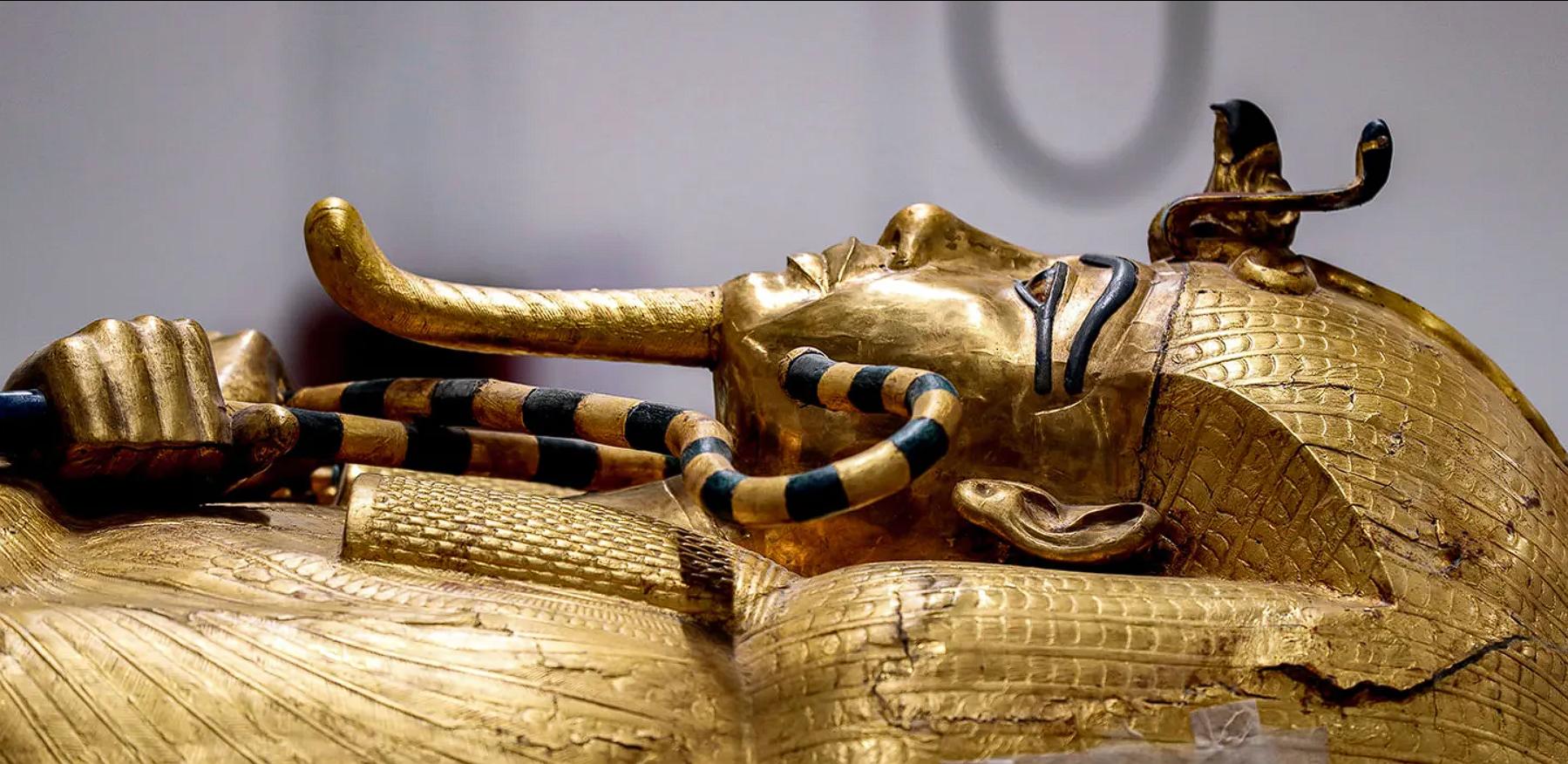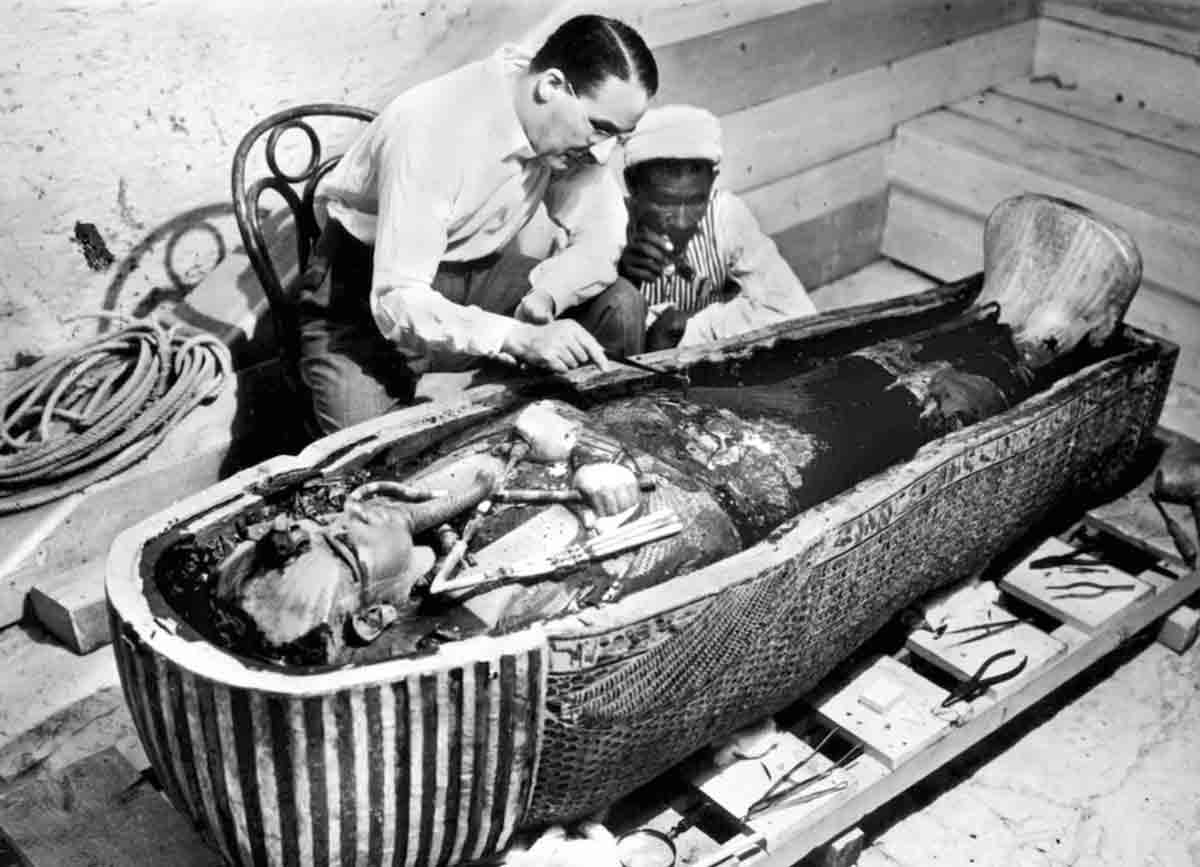The Hidden Tomb: A Mystery Beneath the Sands
The Lost Pharaoh’s Resting Place
For over 3,000 years, the tomb of Pharaoh Tutankhamun remained concealed beneath the sands of Egypt’s Valley of the Kings. Unlike many other royal tombs, which had been looted over the centuries, this burial site remained largely undisturbed. This remarkable preservation turned it into an invaluable time capsule, holding the secrets of an ancient civilization.
A Century of Searching
Before Howard Carter’s discovery in 1922, many archaeologists believed that all the significant tombs in the Valley of the Kings had already been found. However, Carter, funded by Lord Carnarvon, persisted in his search, convinced that a hidden tomb still awaited discovery. His perseverance would lead to one of the most extraordinary moments in archaeological history.
The Breakthrough Moment
In November 1922, Carter’s team uncovered a staircase leading to a sealed door bearing the insignia of Tutankhamun. When Carter made a small hole in the doorway and peered inside with a candle, he was asked if he could see anything. His famous response—”Yes, wonderful things”—marked the beginning of a discovery that would captivate the world.

Inside the Tomb: A Glimpse into Ancient Egyptian Royalty
Unveiling the Treasure Trove
The tomb contained over 5,000 artifacts, including gilded chariots, jewelry, statues, and a magnificent golden sarcophagus. The burial chamber was a spectacle of craftsmanship, with the young pharaoh’s golden death mask becoming an icon of ancient Egypt. The sheer wealth of objects provided invaluable insight into the burial customs and beliefs of the time.
The Mystery of the Mummy
When Carter unsealed the final chamber, he found the mummy of Tutankhamun encased in nested coffins. Studies of the remains have fueled ongoing debates about the pharaoh’s life and death. Some theories suggest he died from an accident or illness, while others propose political intrigue.
The Curse of the Pharaoh
Not long after the tomb’s opening, a series of mysterious deaths among those involved in the excavation led to rumors of a curse. Although scientists have largely debunked the “Curse of the Pharaoh,” the legend persists, adding to the tomb’s mystique and allure.

The Legacy of Tutankhamun’s Tomb
Transforming Egyptology
Tutankhamun’s tomb revolutionized the field of Egyptology. Unlike many other burials that had been stripped of their riches, this discovery provided scholars with an intact view of royal burial practices, artistic achievements, and daily life in ancient Egypt.
Modern Scientific Investigations
Advances in technology continue to unlock new secrets from the tomb. CT scans of the mummy have revealed details about the pharaoh’s health, while ongoing studies of the artifacts shed light on trade, craftsmanship, and religious practices of the 18th Dynasty.
Preserving the Legacy
Today, most of Tutankhamun’s treasures are housed in the Grand Egyptian Museum in Giza. The discovery has had a lasting impact on tourism, inspiring countless exhibitions worldwide and fueling the public’s fascination with ancient Egypt.

What Lies Beneath: The Search for More Hidden Tombs
Could There Be More Tombs?
Tutankhamun’s tomb was considered a minor burial in comparison to those of more prominent rulers. This raises the question: what other undiscovered tombs might still lie beneath the Valley of the Kings?
Radar Scans and New Leads
Recent ground-penetrating radar scans suggest the possibility of hidden chambers near Tutankhamun’s tomb. Some Egyptologists speculate these may belong to Queen Nefertiti or other members of the royal family, fueling further excitement in the field.
The Future of Egyptian Archaeology
As technology advances, new methods of exploration may uncover even more secrets buried beneath Egypt’s sands. The discovery of Tutankhamun’s tomb was a turning point, but it is likely just one chapter in the ongoing story of Egypt’s ancient past.
The legend of Tutankhamun continues to inspire curiosity and wonder. What other treasures and mysteries remain hidden, waiting to be unearthed? The sands of time still hold many secrets, and the next great discovery could be just around the corner.


CÁC TIN KHÁC
Mary Walton: The Forgotten Inventor Who Helped Clean Up America’s Cities
Tomb of Queen Nefertari in the Valley of the Queens, Egypt
Discover the Hypostyle Hall of the Temple of Hathor at Dendera
Venus de Losange: Unveiling the Mystery of a 20,000-Year-Old Paleolithic Icon